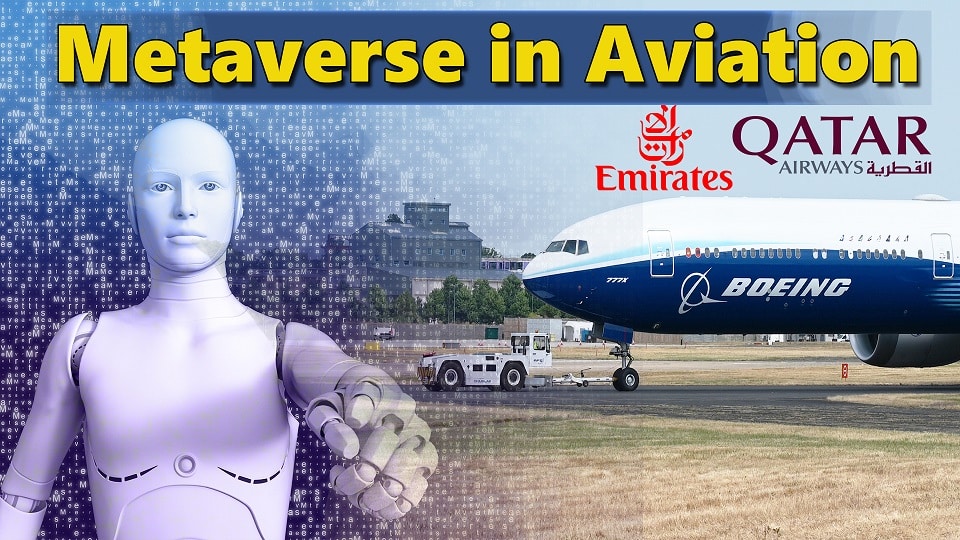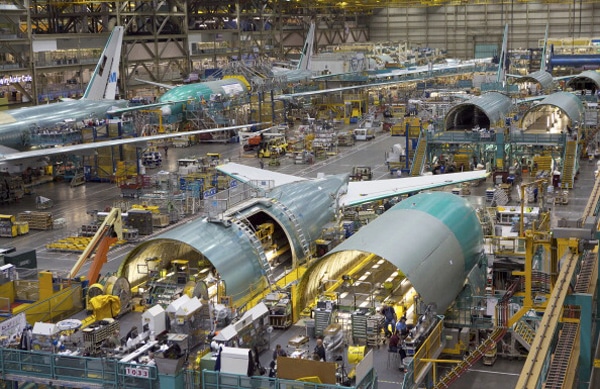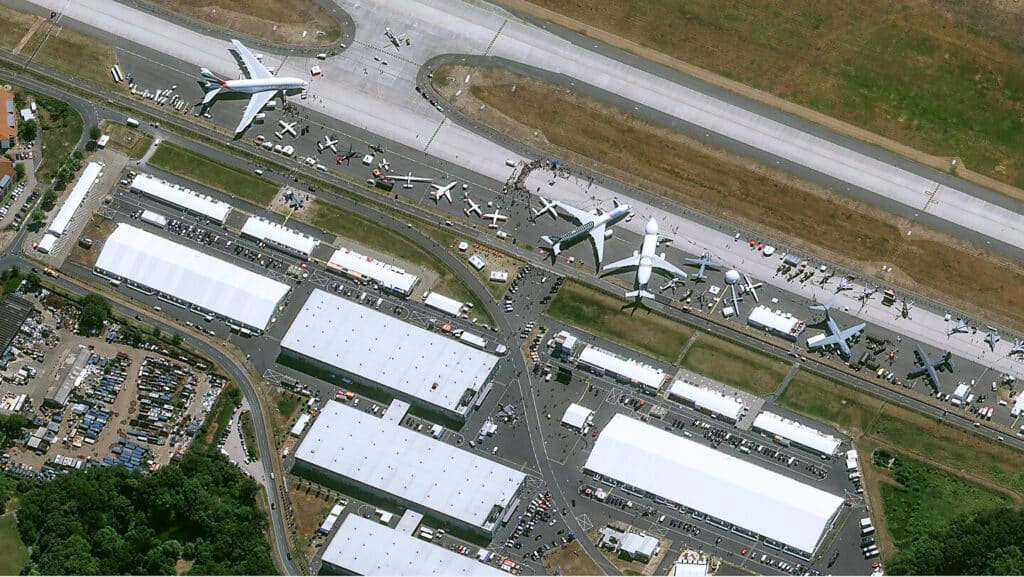Aerospace
How can Metaverse transform the aviation industry? Explained
The majority of aviation firms are concentrating on Metaverse. There will be significant changes in the aviation business.

It is the technology of the future for 3D virtual worlds and Internet applications. The term metaverse first appeared in the science fiction book Snow Crash in 1992 as a combination of the words meta and universe. It is the kind of technology that links the virtual and real worlds through the use of headsets for virtual and augmented reality. This is frequently utilized in a variety of applications, including those in the gaming sector, training services, the medical field, engineering, and many more.
The Metaverse is now Mark Zuckerberg’s most anticipated project, yet due to the application’s lack of popularity, it has received a lot of criticism. However, the metaverse might bring about a fresh revolution in the training sector. The majority of businesses have begun looking for ways to use metaverse channels to develop their staff members’ abilities in the virtual reality environment.
Emirates Will Train Thousands of New Cabin Crew in the Metaverse(Opens in a new browser tab)
What Is the Metaverse, Exactly? How does it function?
The metaverse can be compared to the internet in a virtual 3D space in its most basic form. The metaverse resembles a Zoom conference that has been amplified in a way that participants feel as though they are in the same place for the majority of the training exercises. Participants get a sense of the actual environment thanks to the game’s own virtual universe. Users can also manipulate the tools virtually and engage with them in this way.
It is a new milestone in innovation since it offers some benefits over quickly gaining knowledge of specifics and comprehending aspects that are schematically described. The Metaverse’s results include the ability to organise meetings, play games, provide technical training, and use it for induction programmes, among many other things.
Why the aviation industry will benefit from the metaverse.
The majority of businesses are constantly concerned with their staff members’ ongoing skill development, yet some of the most knowledgeable workers may not always be nearby such a training centre. Therefore, Metaverse can bridge network gaps and provide virtual reality training for such trainees, which will be helpful for any employees of organisations sitting wherever in the world.
These are the 8 benefits of being an Emirates Pilot.(Opens in a new browser tab)
Because of the staff’s limited availability and high demand, several airlines have a tough time keeping them on standby, and paying their salaries could cause them severe financial difficulties. This issue can be resolved by Metaverse by offering pre-intern applicants training whenever a need arises. Airlines can then recruit them, swiftly instruct them on their duties, and then induct them into the workforce.

EVERETT, WASHINGTON – JUNE 13: Employees work on the Boeing 777 assembly line June 13, 2012, at the Boeing Factory in Everett, Washington. (Photo by Stephen Brashear/Getty Images)
Who will be the first to use Metaverse?
Airlines must be technologically advanced since they are competing for market share and profit. Emirates and Qatar Airways have disclosed their intentions to introduce NFTs and join the Metaverse. The metaverse is a market that Singapore Airlines, Lufthansa, Qatar Airways, and Qantas are all attempting to break into. Imagine how beneficial it would be for customers to check and reserve seats on aeroplanes using the metaverse.
[the_ad id=”17216″]
Airlines have therefore turned to the metaverse to give their customers the same flying experience online. Through Metaverse, Qatar Airways has made it possible for travellers to see the cabin from the comfort of their own homes. Additionally, the airline has hired the first Meta-human cabin crew. As they may be utilised for ticketing and trip tracking in the airline industry, NFTs are being used to enhance already-existing loyalty flight programmes. Information like flight time, distance travelled, etc. can also be stored by NFTs.
Can the Metaverse be used to help us manufacture aircraft?
Boeing is considering it. The struggling aircraft manufacturer hopes to improve its design process by doing this in the metaverse. Of course, it’s not entirely apparent what it involves.
Future aircraft manufactured by the Boeing Company will include robots that can communicate with one another and run 3-D technical blueprints. Microsoft headsets, which offer a mixed reality experience, will connect mechanics from all over the world at the same time.
The goal of Boeing’s strategy is to integrate design, manufacturing, and airline services functions into a single digital manufacturing system. The corporation says it will be implemented over the next two years.
The “Metaverse and the Future of Flight” crowdsourcing challenge were started by Airbus. The competition looks for creative ideas to reinvent and improve the traveller experience from departure to destination using the metaverse.
How the metaverse can benefit the medical field
virtual medical centre It consists of a virtual reality hospital setting, where first treatments will concentrate on physiotherapy services
It is anticipated that the metaverse will be a useful tool for performing challenging surgical procedures and improving patient care. Complex surgeries will soon incorporate augmented reality (AR), just as surgical procedures presently use robotics. Also, for effective diagnosis, use technology like smart glasses.
[the_ad id=”17216″]
How Metaverse may significantly reduce the cost of training
Materials are one of the direct expenses related to in-person training. Learners can make mistakes in the metaverse without using up physical resources. This encourages effortless learning and conserves resources. Training in the metaverse is used to develop soft skills as well as technical skills. Important qualities like communication, teamwork, customer service, and people-facing abilities are fostered through metaverse avatars. The metaverse platform enables students to get practical experience that speeds up and improves efficiency in their learning.
Prerecorded sessions can be used with this material, which has the potential to be important for the application’s use. The best of its quality training personnel can be served by the metaverse without much use of human involvement.

Aerospace
When Ratan Tata was denied entry to the airfield at the Aero India show, he waited

During our visit to Aero India 2019, we had the unexpected opportunity to see Ratan Tata at the event, which was a thrilling moment for us. However, there was a surprising hiccup when the security staff didn’t allow him to enter due to a lack of a security pass.
Despite this, he remained calm and patiently waited for about 20 minutes until a member of the Tata team brought him the required pass, after which he calmly proceeded inside. It was a humbling sight, showcasing his composed demeanor even in such situations.
Ratan Tata ji is not only a renowned industrialist but also a trained pilot, holding a pilot’s license. In 2007, he became the first Indian civilian to fly the F-16 Falcon during the Aero India show in Bangalore—a proud moment for the nation.
His passion for aviation extended beyond flying, as he played a key role in shaping India’s aerospace industry. Under his leadership, Tata ventured into manufacturing and maintaining aerospace components while upholding its legacy of quality. Notably, Tata’s collaboration with Airbus to develop and manufacture the C295 aircraft is a testament to its growing influence in the sector.
-

 Aviation2 months ago
Aviation2 months agoMicrosoft Flight Simulator Raises $3 Million to Bring Back the An-225 Mriya
-

 Airlines2 months ago
Airlines2 months agoQatar Citizens Can Travel to the United States Without a Visa
-

 Aviation2 months ago
Aviation2 months agoQatar Airways bans these new Electronic Devices on plane
-

 Airlines2 months ago
Airlines2 months agoJapan Airlines Rolls Out Free Domestic Flights to International Passengers
-

 Defence2 months ago
Defence2 months agoWhich Country Has the Largest Fleet of Fighter Aircraft?
-

 Airport2 months ago
Airport2 months agoWestern Sydney Airport Welcomes Its First Plane After 6 Years of construction
-

 Airlines4 days ago
Airlines4 days agoDAMAC Air: Dubai’s New Luxury Airline Offers Free Flights for Registration
-

 Aviation2 months ago
Aviation2 months agoDid you know ? Once Boeing 747 carried 1088 passenger in 1991









